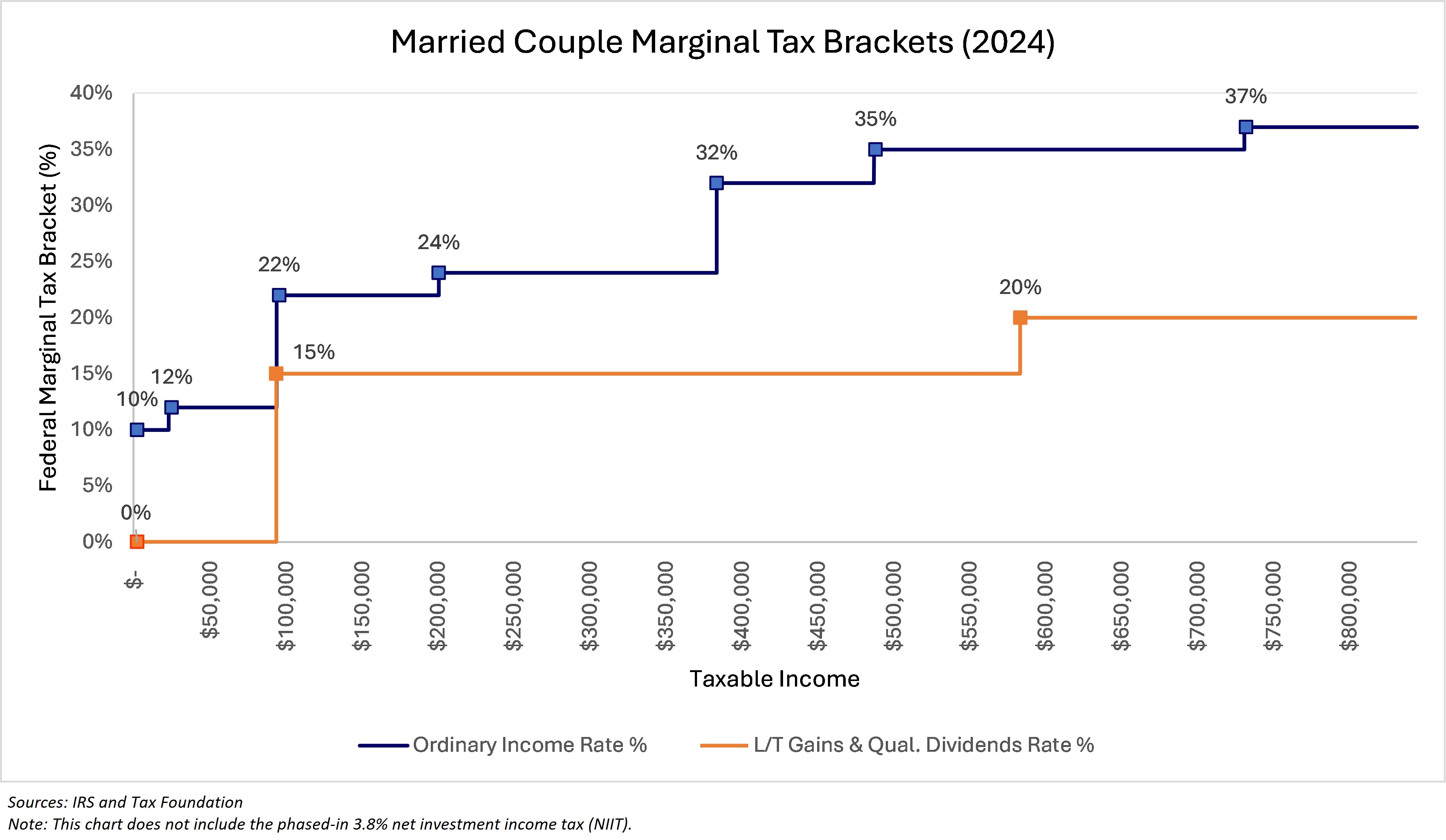Non-Qualified Annuities: Should Retirees Think Twice?
A twist many don’t see coming is that earnings from non-qualified annuities are taxed as ordinary income rather than at more favorable capital gains tax rates.


Picture this: You're on the cusp of retirement, and you've just learned about a financial tool that promises to shield your hard-earned savings from taxes until you need them.
This tool is the non-qualified annuity, an insurance contract funded with after-tax money that defers taxes on your income and growth until withdrawn.
Sounds like an easy decision, right?

Sign up for Kiplinger’s Free E-Newsletters
Profit and prosper with the best of expert advice on investing, taxes, retirement, personal finance and more - straight to your e-mail.
Profit and prosper with the best of expert advice - straight to your e-mail.
Hold that thought ...
In a world devoid of pensions, 401(k)s and similar employer-sponsored plans have become many Americans' go-to retirement saving option. These plans offer upfront tax breaks and deferred taxation on earnings, a seemingly ideal combination.
But there's a catch.
Every dollar withdrawn from a tax-deferred account is taxed as ordinary income — the least-favorable type of income tax there is.
An unfortunate surprise for many
Now, let's circle back to non-qualified annuities. By opting for one, you're essentially converting all potential long-term capital gains (which enjoy favorable tax treatment) into ordinary income, thus increasing your tax burden when those gains are withdrawn. It's an unfortunate twist many don't see coming and are unaware of when buying a non-qualified annuity.
Consider this scenario: You're a modern-day retiree with a diverse portfolio of investments — most of which have been saved in tax-deferred accounts, some in tax-preferential accounts and a small amount in tax-free accounts. Adding a non-qualified annuity might seem prudent, especially if you are a tax-sensitive investor. But if your retirement nest egg is already concentrated in tax-deferred accounts, that type of annuity will only make your future tax exposure less diverse.
As you can see in the chart below, ordinary income tax rates (blue) are generally higher than tax rates on long-term capital gains and qualified dividends issued by stocks (orange), which is why it is advantageous for today's retirees to preserve their non-tax-deferred assets rather than convert them:

Before jumping into a non-qualified annuity, ask yourself:
How diversified is my tax exposure in retirement? Don't just diversify your investments; diversify your future tax liabilities. On the day you retire, aim to have your savings split into equal thirds among tax-deferred, tax-preferential and tax-free accounts. This lets you choose which accounts to withdraw from each year to achieve the lowest tax rate.
What does my retirement withdrawal plan look like? If you anticipate needing all your savings for retirement expenses, it’s likely advantageous to keep your taxable investment accounts due to their favorable tax treatment rather than shifting that money into another tax-deferred option like a non-qualified annuity.
Will my retirement lifestyle push me into the highest tax brackets? If yes, it would be wise to reconsider piling more money into tax-deferred savings. If not, then the tax-deferred benefits of a non-qualified annuity may fit your situation well.
Do you care about maximizing your financial legacy? Taxable brokerage accounts left to your heirs receive a step-up in basis upon your death. This is a major tax benefit for heirs that adjusts the principal in your account (cost basis) to the fair market value of your investments on the date of your death. In some cases, this can lead to thousands of dollars in capital gains taxes being forgiven. Alternatively, even though it is funded with after-tax dollars, a non-qualified annuity does not receive a “step-up in basis” upon your death. This is a major downfall of the non-qualified annuity, in my opinion.
Based on my experience …
From my experience as a financial adviser, I've found that the retirees who need to withdraw most of their savings to afford their lifestyle in retirement are better off nurturing their after-tax investments in taxable brokerage or tax-free accounts rather than piling more into the tax-deferred bucket. Next to health care costs, income taxes are a retiree's most significant expense. The goal is to minimize your income taxes as much as possible.
Although a non-qualified annuity offers immediate tax relief, it can lead to a higher tax burden in the long run. A wiser approach may be to focus on preserving your non-tax-deferred savings. This doesn't make non-qualified annuities bad financial instruments. It just means the decision to use one in your financial situation requires careful consideration from a variety of perspectives.
Advisory services offered through Wealth Enhancement Advisory Services, LLC, a registered investment advisor and affiliate of Wealth Enhancement Group®.
Related Content
Get Kiplinger Today newsletter — free
Profit and prosper with the best of Kiplinger's advice on investing, taxes, retirement, personal finance and much more. Delivered daily. Enter your email in the box and click Sign Me Up.

Doug is a CERTIFIED FINANCIAL PLANNER™ who guides families toward a secure retirement, ensuring their wealth is preserved and desired lifestyle is sustainable. He leads an advisory team at Wealth Enhancement Group, an independent RIA that has consistently been named as a Barron’s Top 100 RIA Firm. His team is based in Fairfield County, Conn.
-
 Sam's Club Plans Aggressive Expansion: Discover Its New Locations
Sam's Club Plans Aggressive Expansion: Discover Its New LocationsSam's Club expansion plans will open up to 15 new stores each year. Learn where they plan to open in 2025.
By Sean Jackson Published
-
 What Is the Buffett Indicator?
What Is the Buffett Indicator?"It is better to be roughly right than precisely wrong," writes Carveth Read in "Logic: Deductive and Inductive." That's the premise of the Buffett Indicator.
By Charles Lewis Sizemore, CFA Published
-
 How Baby Boomers and Gen Xers Are Redefining Retirement Living
How Baby Boomers and Gen Xers Are Redefining Retirement LivingBoth generations need to embrace change and leverage real estate as a dynamic asset in their retirement planning. Here's how financial advisers can help, too.
By David Conti, CPRC Published
-
 How Good Advisers Manage Risk in Challenging Markets
How Good Advisers Manage Risk in Challenging MarketsThey understand the difference between what might be real challenges to an investor's strategy and fear brought on by market volatility.
By Ryan L. Kirk, CFA® Published
-
 Financial Planning's Paradox: Balancing Riches and True Wealth
Financial Planning's Paradox: Balancing Riches and True WealthWhile enough money is important for financial security, it does not guarantee fulfillment. How can retirees and financial advisers keep their eye on the ball?
By Richard P. Himmer, PhD Published
-
 A Confident Retirement Starts With These Four Strategies
A Confident Retirement Starts With These Four StrategiesWork your way around income gaps, tax gaffes and Social Security insecurity with some thoughtful planning and analysis.
By Nick Bare, CFP® Published
-
 Should You Still Wait Until 70 to Claim Social Security?
Should You Still Wait Until 70 to Claim Social Security?Delaying Social Security until age 70 will increase your benefits. But with shortages ahead, and talk of cuts, is there a case for claiming sooner?
By Evan T. Beach, CFP®, AWMA® Published
-
 Retirement Planning for Couples: How to Plan to Be So Happy Together
Retirement Planning for Couples: How to Plan to Be So Happy TogetherPlanning for retirement as a couple is a team sport that takes open communication, thoughtful planning and a solid financial strategy.
By Andrew Rosen, CFP®, CEP Published
-
 Market Turmoil: What History Tells Us About Current Volatility
Market Turmoil: What History Tells Us About Current VolatilityThis up-and-down uncertainty is nerve-racking, but a look back at previous downturns shows that the markets are resilient. Here's how to ride out the turmoil.
By Michael Aloi, CFP® Published
-
 Could You Retire at 59½? Five Considerations
Could You Retire at 59½? Five ConsiderationsWhile some people think they should wait until they're 65 or older to retire, retiring at 59½ could be one of the best decisions for your quality of life.
By Joe F. Schmitz Jr., CFP®, ChFC® Published